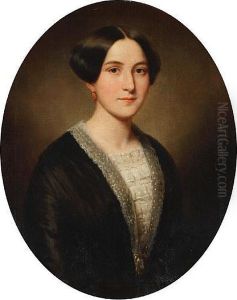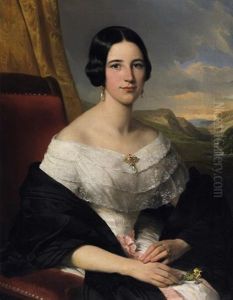Louis Krevel Paintings
Louis Krevel, born in Trier, Germany in 1801, was a 19th-century German painter known for his landscape and architectural paintings. His artistic journey began under the tutelage of his father, the court painter Ferdinand Krevel, from whom he first learned the basics of painting. Louis's early exposure to the arts fostered a deep understanding and appreciation for the medium, which he would continue to develop throughout his life.
In pursuit of advancing his artistic skills, Louis Krevel attended the Düsseldorf Academy of Arts, an institution renowned for its influence on the Düsseldorf school of painting, a movement characterized by detailed and imaginative landscapes. During his time at the academy, Krevel honed his craft under the guidance of leading artists of the time, such as Johann Wilhelm Schirmer, who was known for his romantic landscape paintings. Krevel's style was deeply influenced by the Düsseldorf school, and he became proficient in depicting the natural world with a romantic sensibility.
After his education, Krevel embarked on a career that would see him create a body of work primarily focused on landscapes, cityscapes, and architectural subjects. His paintings often captured the grandeur of nature and the intricacies of human-made structures, with a particular emphasis on the interplay of light and shadow. Krevel's artworks were well-received, and he gained a reputation for his ability to imbue his scenes with a sense of atmosphere and emotional depth.
Throughout his career, Krevel remained active in the German art scene, exhibiting his works at various salons and galleries. His paintings were collected by art enthusiasts and patrons, and he was recognized as a significant contributor to the landscape genre. Despite the popularity of his work during his lifetime, like many artists of his era, Louis Krevel's name is not widely known today outside of art historical circles.
Louis Krevel passed away in 1876, leaving behind a legacy of picturesque landscapes and finely rendered architectural paintings that continue to be studied and admired by art historians and enthusiasts. His work is a testament to the skill and creativity of the Düsseldorf school of painting, and it offers a window into the romantic sensibilities of 19th-century German art.

